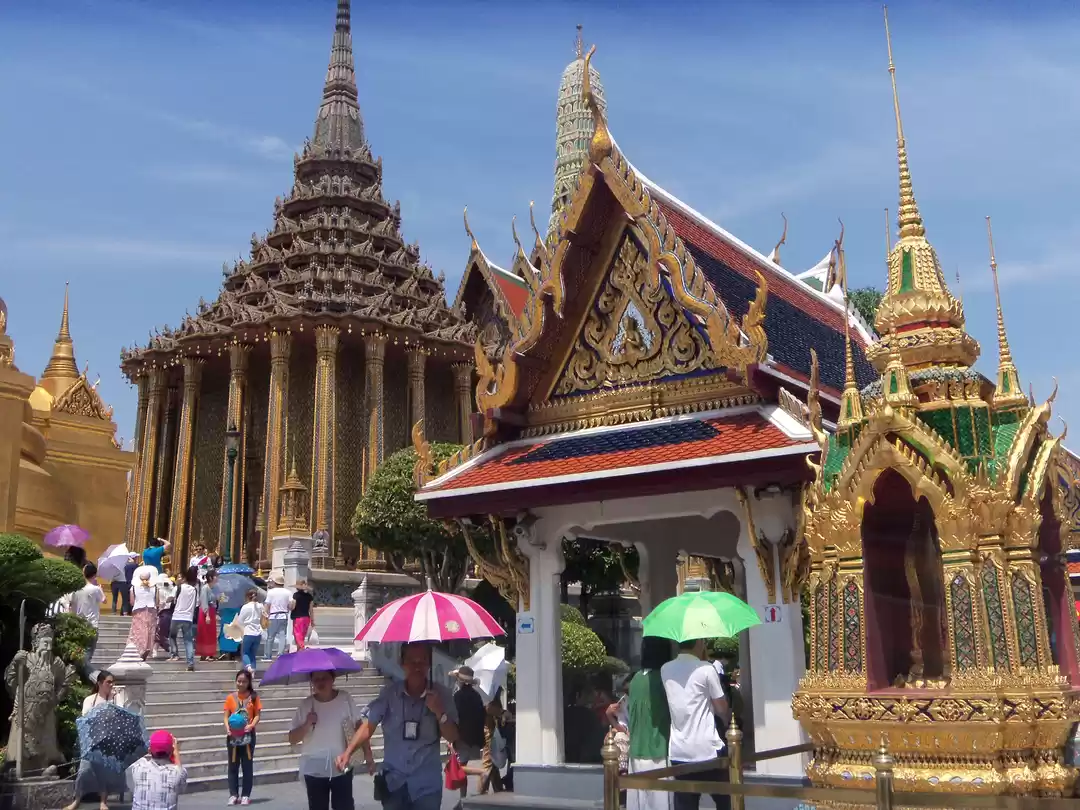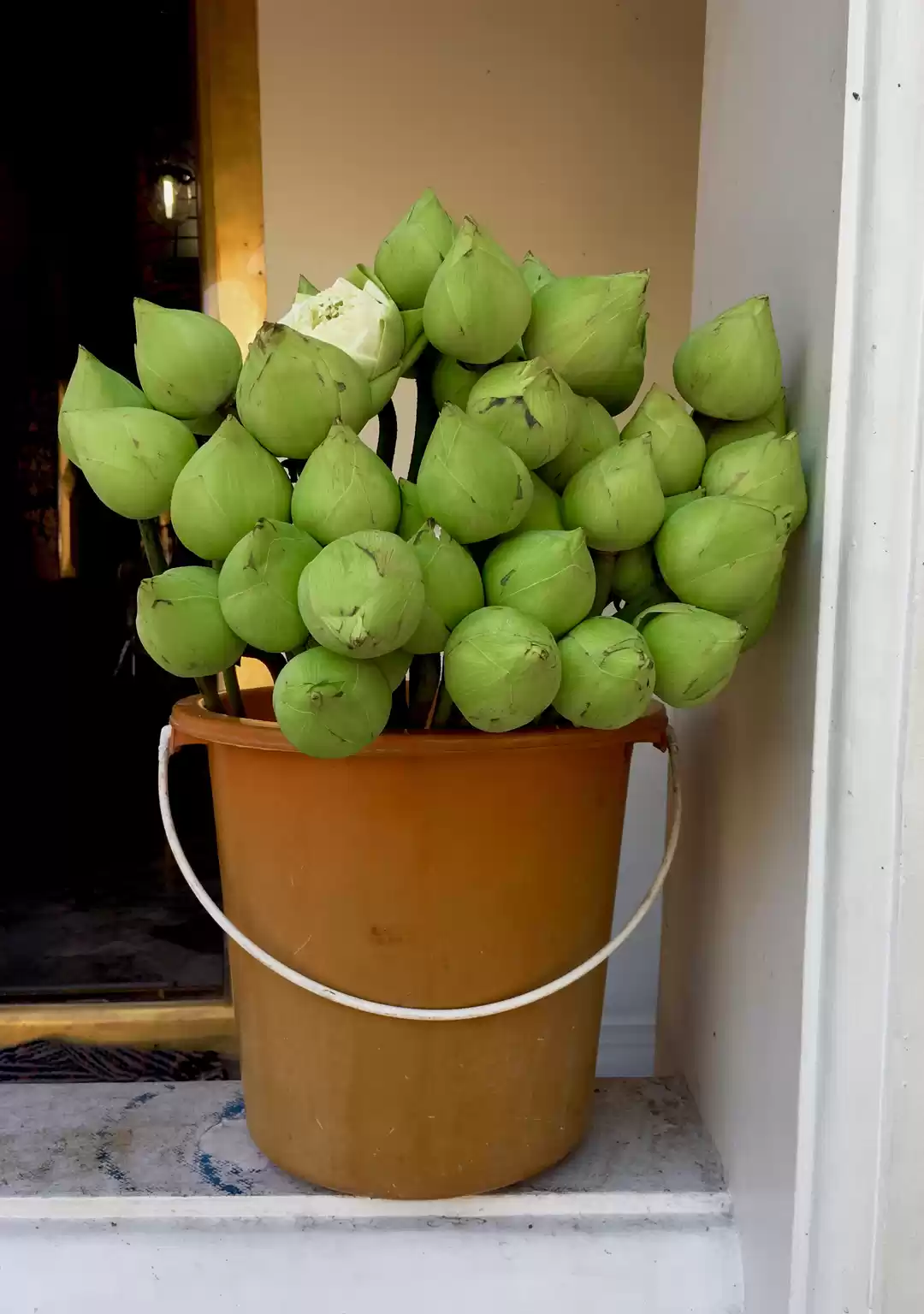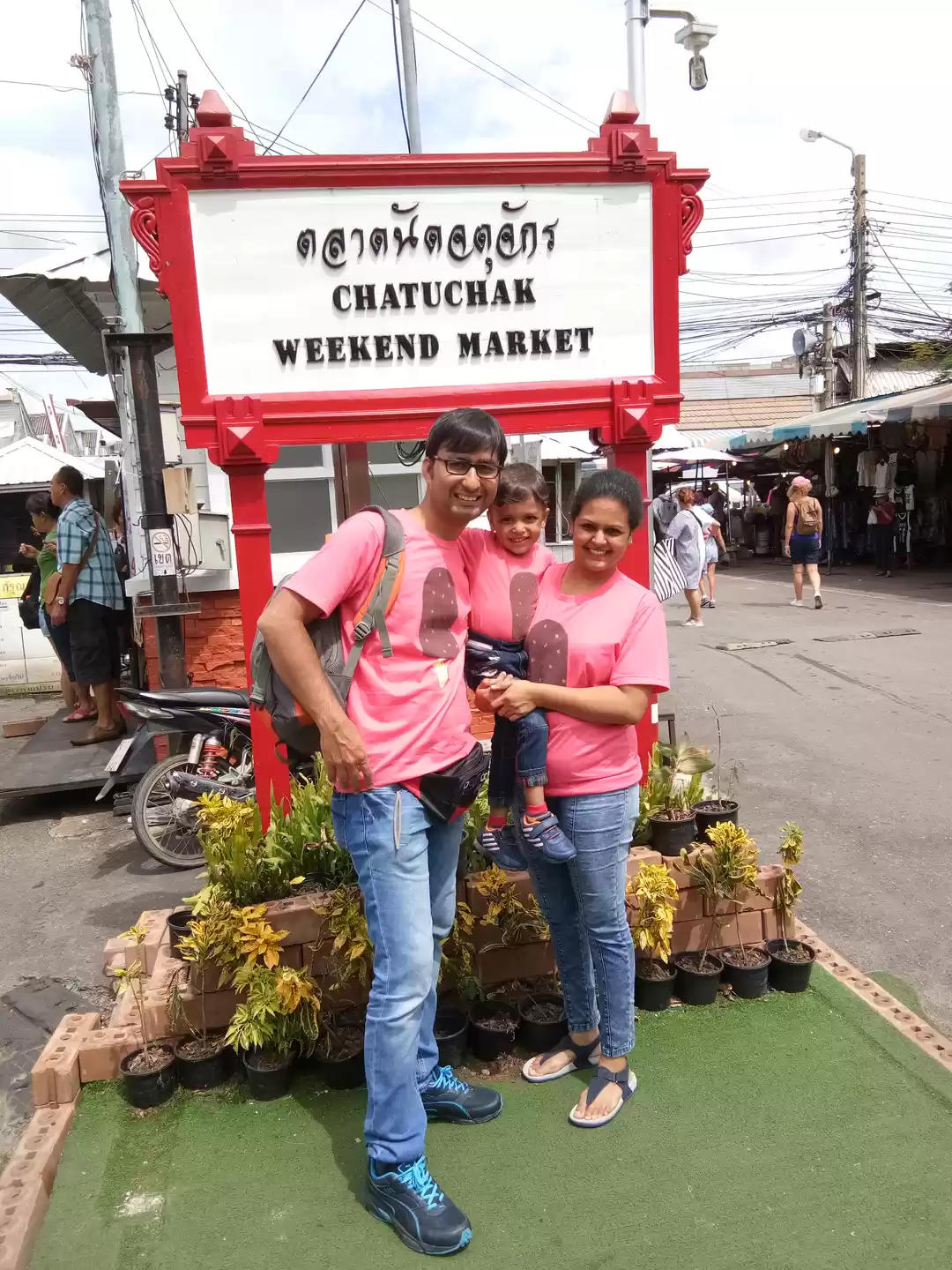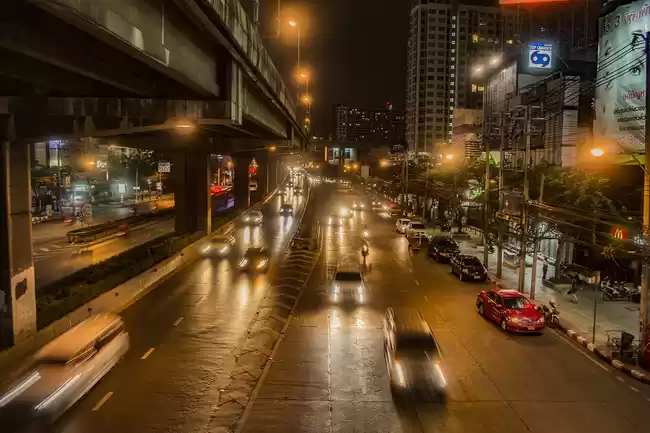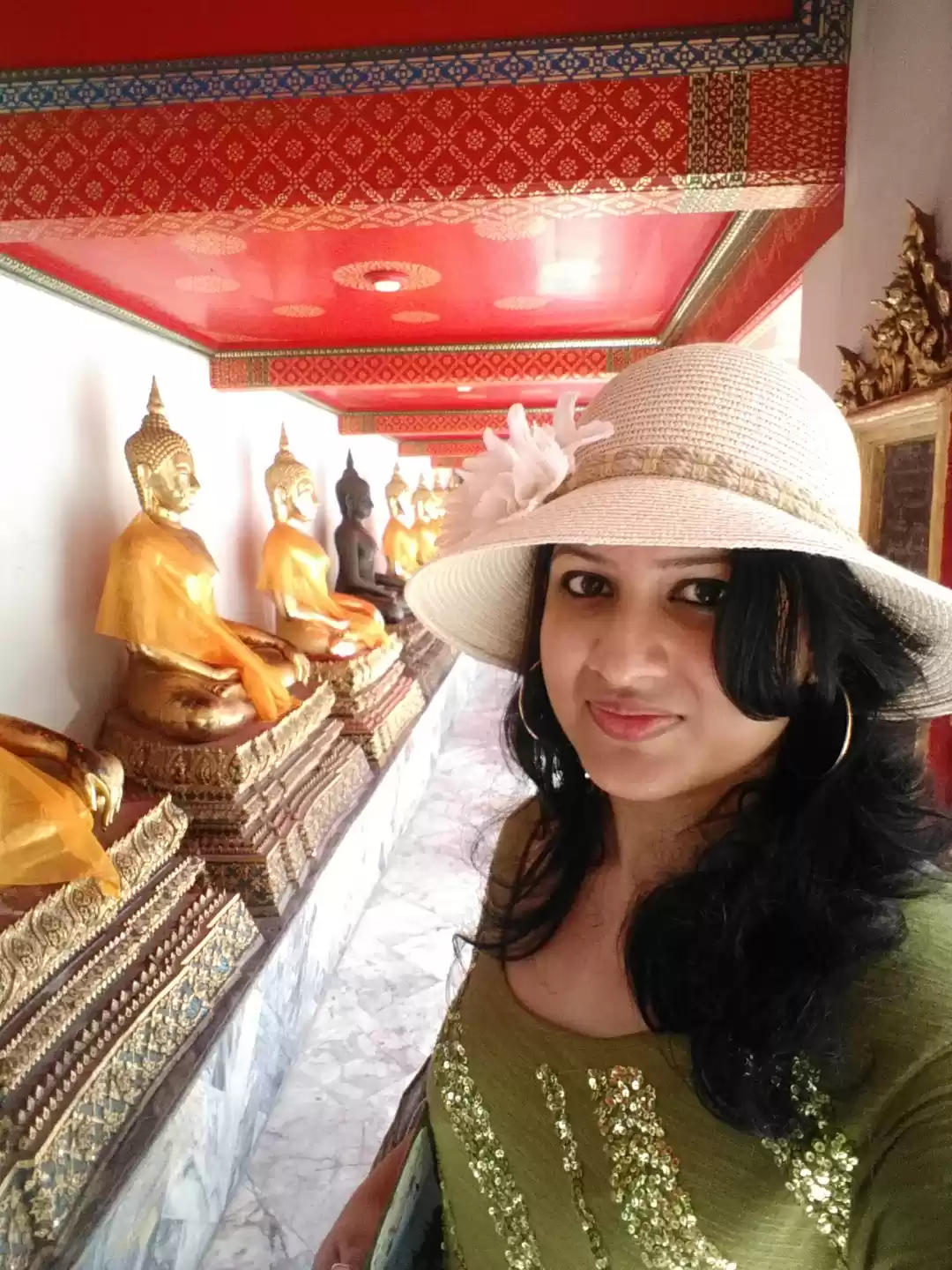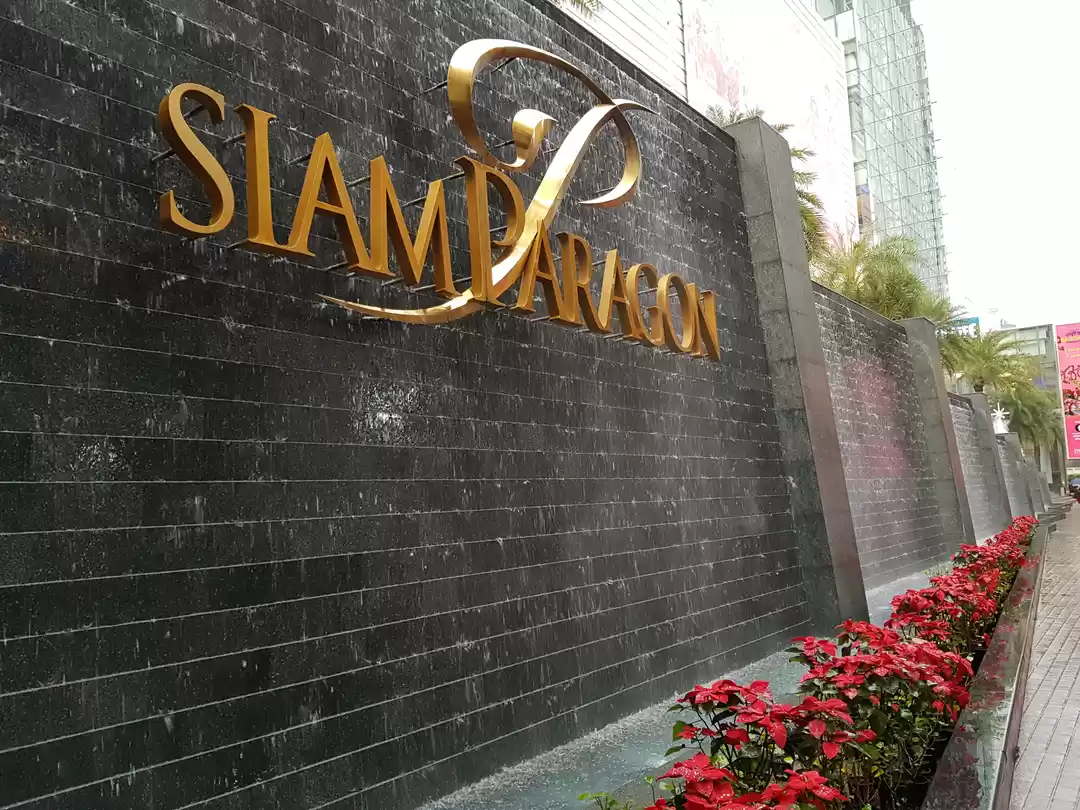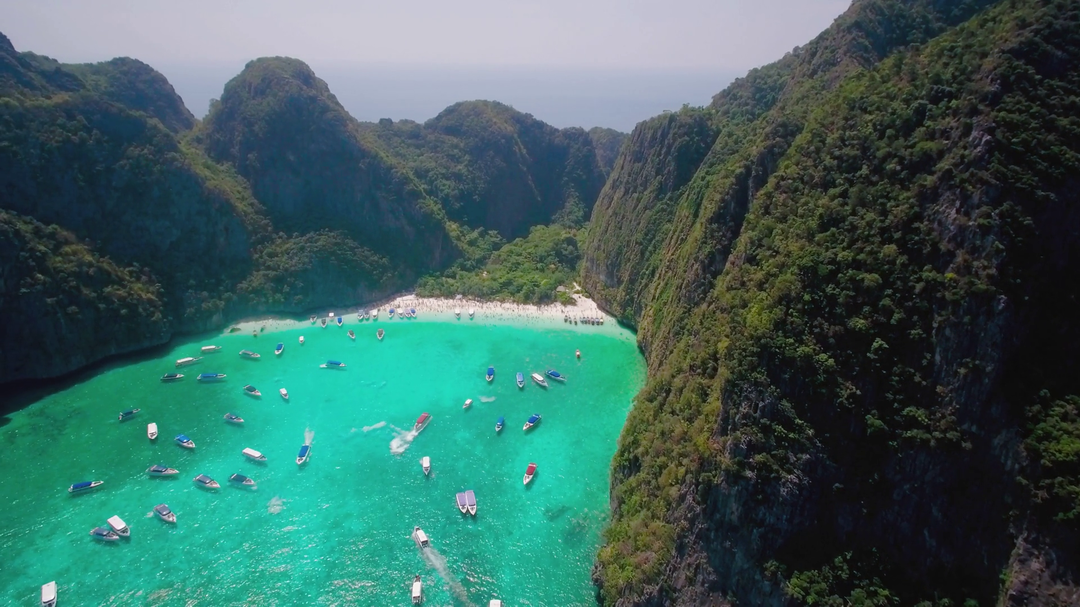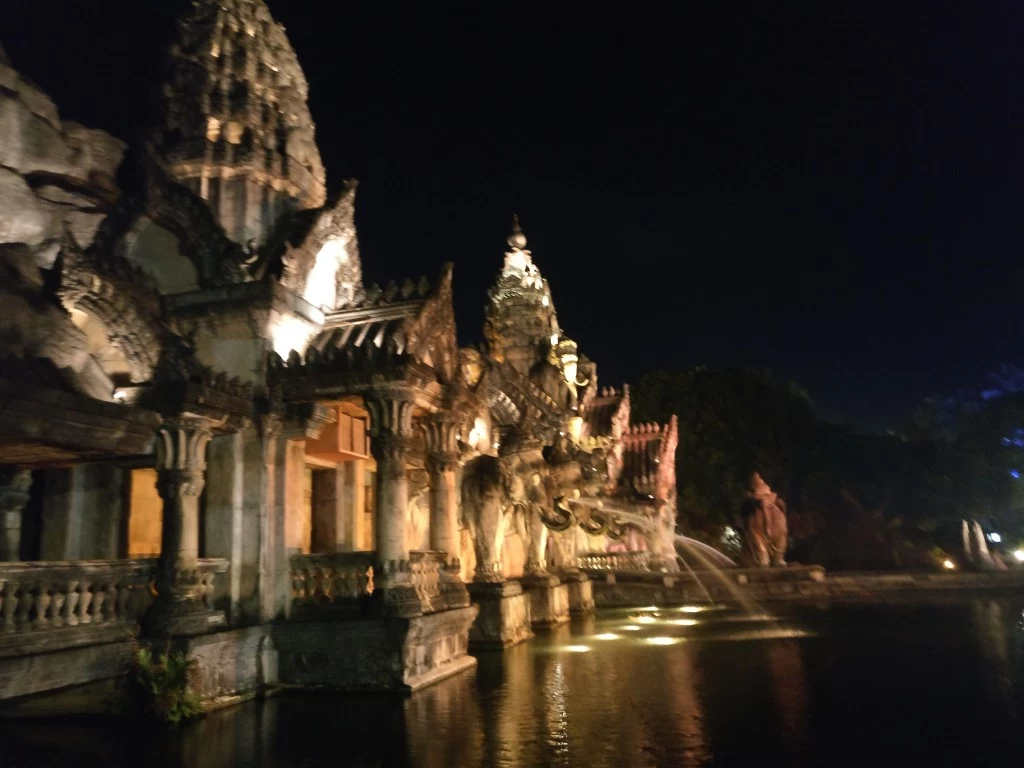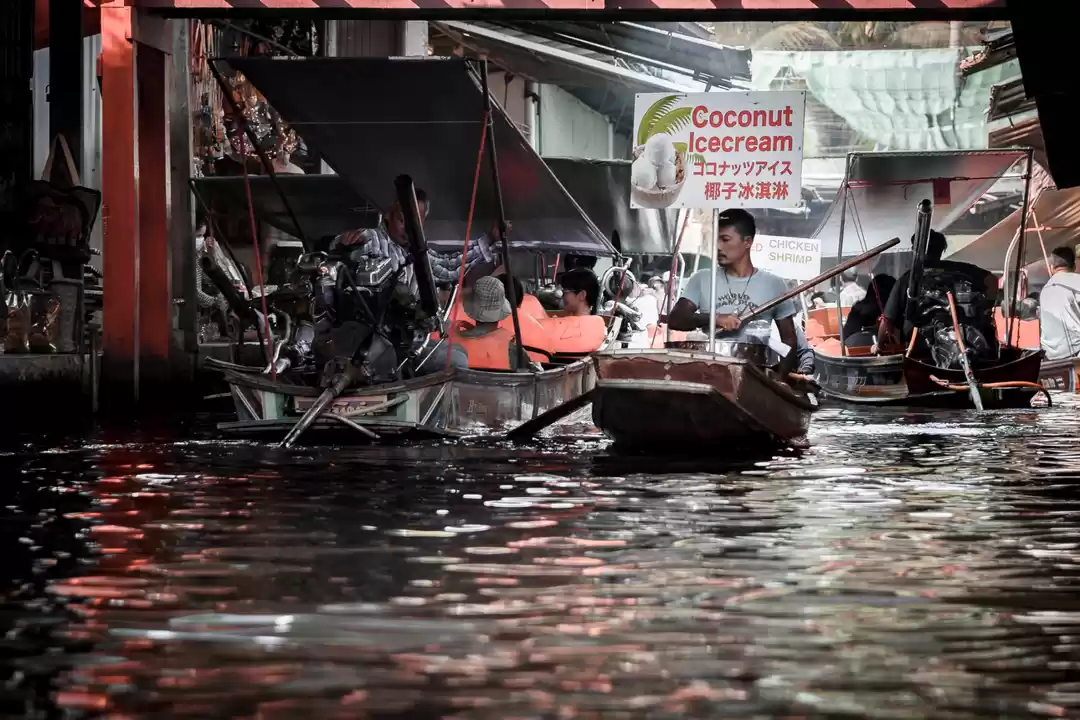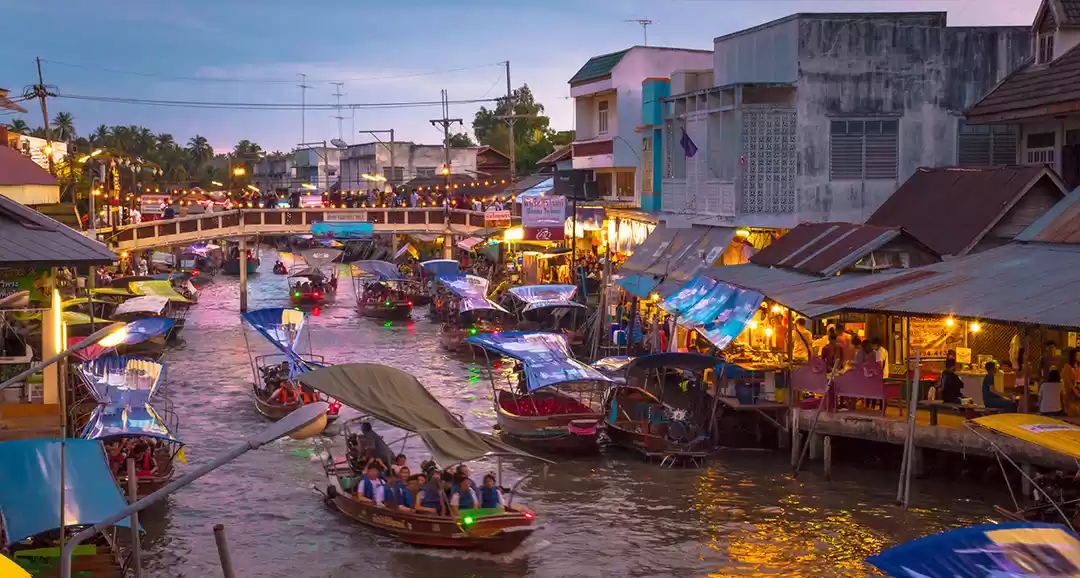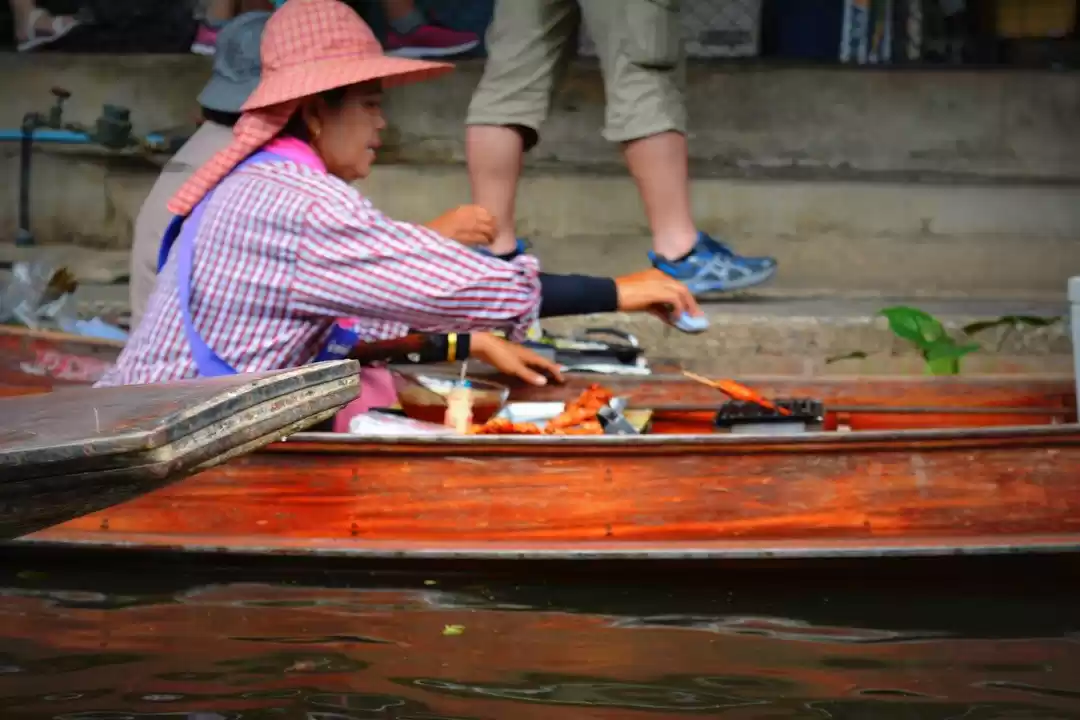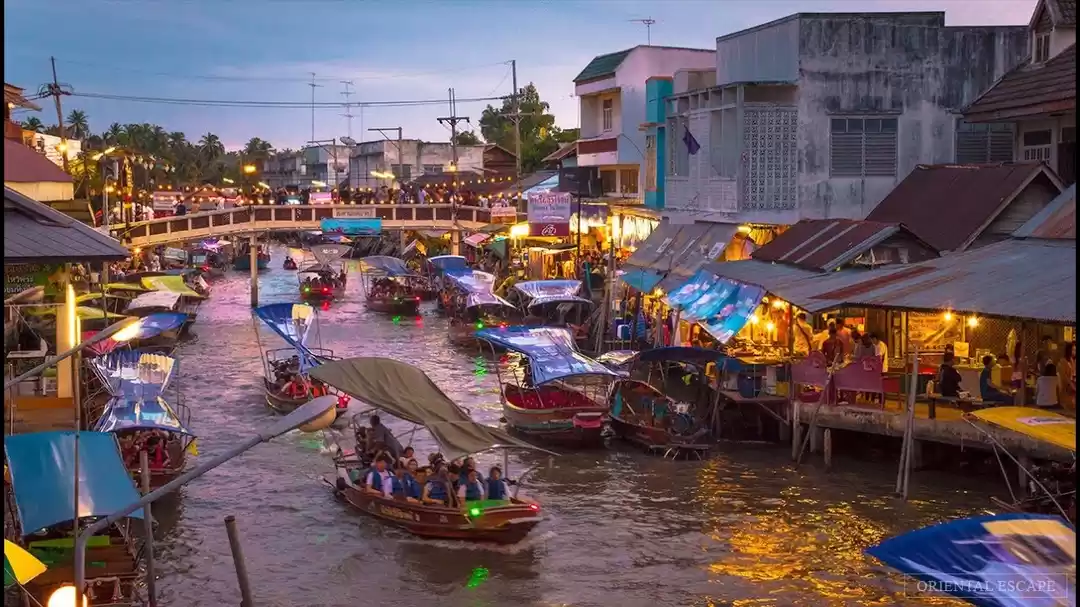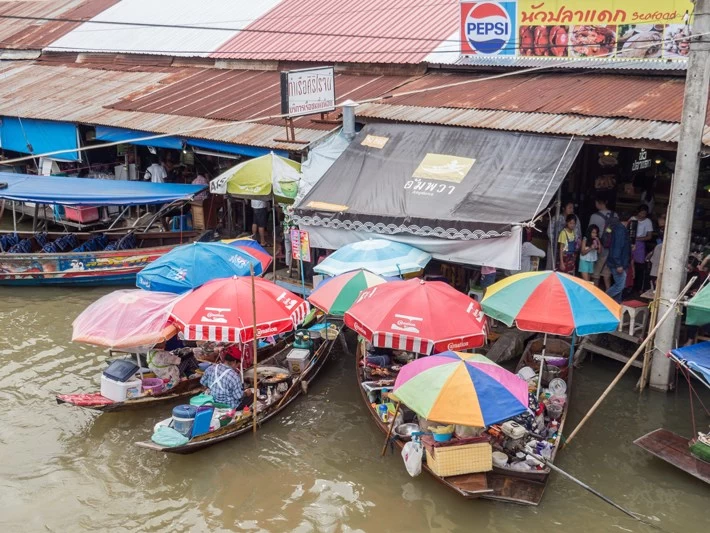Have you ever wondered what it would be like to travel back in time and witness the traditional and authentic Thai culture and lifestyle? If so, then you should not miss the opportunity to visit the Damnoen Saduak Floating Market, one of the most famous and popular attractions in Thailand. This floating market is not only a place to buy and sell goods, but also a place to experience the exotic and charming atmosphere of the country's preserved culture. In this article, we will guide you through everything you need to know about visiting this amazing place, from its history, features, activities, transportation, and accommodation.

History and Background of Damnoen Saduak Floating Market
The Damnoen Saduak Floating Market dates back to the late 19th century, when King Rama IV ordered the construction of a 32-kilometer-long canal to connect the Mae Klong River and the Tha Chin River. The canal was completed in 1868, and it became a vital waterway for the local people, who used it for transportation, irrigation, and trade. The canal also enabled the development of the surrounding areas, where many wooden houses, plantations, and temples were built along the banks.
The floating market emerged as a result of the canal's economic and social significance. The local people, mostly farmers and fishermen, would use their long-tail boats to bring their products and goods to the canal, where they would sell them to other villagers and visitors. The floating market became a lively and colorful scene, where one could find a variety of items, such as fruits, vegetables, flowers, food, clothes, souvenirs, and handicrafts. The floating market also became a cultural and religious center, where people would exchange news, gossip, and blessings.
The Damnoen Saduak Floating Market has changed over time, as modernization and urbanization have affected the canal and the local life. However, the floating market has managed to preserve its original charm and authenticity, and it still attracts thousands of tourists every year, who come to experience the unique and fascinating Thai culture and lifestyle.
Features and Characteristics of Damnoen Saduak Floating Market
The Damnoen Saduak Floating Market is located about 100 kilometers southwest of Bangkok, in the Ratchaburi province. The floating market is actually composed of three smaller markets, namely Ton Khem, Hia Kui, and Khun Phitak. Each market has its own features and characteristics, but they all share the same essence and atmosphere.
One of the main features and characteristics of the floating market is the long-tail boat, which is a traditional wooden boat with a long propeller shaft and a colorful canopy. The long-tail boat is the main mode of transportation and trade at the floating market, and it can carry up to six passengers and a variety of products and goods. The long-tail boat is also a symbol of the Thai culture and identity, as it reflects the ingenuity and adaptability of the local people.
Another feature and characteristic of the floating market is the colorful and diverse products and goods that are sold and bought at the canal. The floating market is a paradise for shoppers and foodies, as one can find almost anything that one can imagine, from fresh and exotic fruits, such as mangoes, bananas, pineapples, and durians, to delicious and mouth-watering food, such as noodles, rice, coconut pancakes, and grilled seafood. The floating market is also a place to discover and appreciate the local handicrafts and souvenirs, such as hats, bags, dolls, and paintings, which are made with skill and creativity by the local artisans.
Another feature and characteristic of the floating market is the lively and vibrant atmosphere that fills the canal and the surrounding areas. The floating market is a place to enjoy and experience the sights and sounds of the Thai culture and lifestyle, such as the smiles and greetings of the friendly and hospitable vendors, the bargaining and haggling of the buyers and sellers, the music and songs of the performers and entertainers, and the prayers and chants of the monks and devotees. The floating market is also a place to admire and appreciate the natural and cultural beauty of the canal and the nearby attractions, such as the green and lush plantations, the quaint and charming wooden houses, and the ancient and sacred temples.
Activities and Experiences at Damnoen Saduak Floating Market
The Damnoen Saduak Floating Market is not only a place to shop and eat, but also a place to have fun and learn. There are many activities and experiences that visitors can enjoy at the floating market, and they can enhance their visit and satisfaction. Here are some of the best and most enjoyable activities and experiences that you should not miss at the floating market:
- Touring along the canal: One of the most popular and recommended activities at the floating market is to take a tour along the canal on a long-tail boat. This is the best way to explore and experience the floating market, as you can see and interact with the vendors and the products, as well as admire the scenery and the attractions along the way. You can either join a group tour or hire a private boat, depending on your preference and budget. The tour usually lasts for about an hour, and it costs between 150 and 300 baht per person.
- Tasting the local food: Another activity that you should not miss at the floating market is to taste the local food that is sold and cooked on the boats and the stalls. The floating market is a heaven for food lovers, as you can find a wide range of dishes and snacks that are delicious and affordable. Some of the must-try food at the floating market are the pad thai (stir-fried noodles with eggs, tofu, and bean sprouts), the tom yum (spicy and sour soup with seafood and herbs), the khanom krok (coconut pancakes with various fillings), and the khao lam (sticky rice with coconut and black beans cooked in bamboo tubes). You can also try some of the exotic fruits, such as the rambutan, the longan, and the dragon fruit, which are fresh and juicy.
- Shopping for souvenirs: Another activity that you should not miss at the floating market is to shop for souvenirs that are unique and memorable. The floating market is a great place to find and buy some of the local handicrafts and souvenirs that are made with skill and creativity by the local artisans. Some of the best souvenirs to buy at the floating market are the straw hats, the woven bags, the wooden dolls, and the oil paintings, which are colorful and charming. You can also bargain and haggle with the vendors to get the best price and deal, which is part of the fun and culture of the floating market.
- Visiting the nearby temples: Another activity that you should not miss at the floating market is to visit the nearby temples that are ancient and sacred. The floating market is surrounded by several temples that are worth visiting, as they showcase the history and culture of the Thai people. Some of the most notable temples near the floating market are the Wat Bang Kung (a temple that is covered by a huge banyan tree), the Wat Amphawan Chetiyaram (a temple that has a beautiful and intricate architecture), and the Wat Rat Charoen Tham (a temple that has a large and impressive reclining Buddha statue).
Transportation and Logistics to Damnoen Saduak Floating Market
The Damnoen Saduak Floating Market is located about 100 kilometers southwest of Bangkok, and it can be reached by various modes of transportation and logistics. However, not all of them are equally convenient and cost-effective, and they can affect the quality and duration of your visit. Here are some of the main transportation and logistics options for getting to the floating market from Bangkok, and their pros and cons:
- Joining a tour: One of the easiest and most hassle-free ways to get to the floating market from Bangkok is to join a tour that is organized by a travel agency or a hotel. This way, you do not have to worry about finding and booking the transportation, as the tour will provide you with a comfortable and air-conditioned bus or van that will pick you up and drop you off at your hotel. The tour will also include a guide who will explain and assist you along the way, as well as a boat ride and a visit to some of the nearby attractions. The tour usually costs between 500 and 1000 baht per person, and it lasts for about half a day or a full day, depending on the itinerary and the stops. The downside of joining a tour is that you will have less flexibility and freedom to explore and enjoy the floating market at your own pace and preference, as you will have to follow the schedule and the group of the tour.
- Taking a bus: Another way to get to the floating market from Bangkok is to take a public bus that runs from the Southern Bus Terminal in Bangkok to the Damnoen Saduak Bus Terminal in Ratchaburi. The bus number is 78, and it operates from 6 a.m. to 6 p.m. every day. The bus ride takes about two hours, and it costs about 50 baht per person. Once you arrive at the Damnoen Saduak Bus Terminal, you will have to take a songthaew (a shared pick-up truck) or a motorbike taxi to the floating market, which will take another 20 minutes and cost about 20 baht per person. The advantage of taking a bus is that you will have more - flexibility and freedom to explore and enjoy the floating market at your own pace and preference, as you will have more control over your time and budget. The disadvantage of taking a bus is that you will have to deal with the hassle and uncertainty of finding and waiting for the bus, as well as the discomfort and crowdedness of the bus ride, especially during the peak hours and seasons.
- Hiring a taxi: Another way to get to the floating market from Bangkok is to hire a private taxi that will take you directly to the floating market. This is the most convenient and comfortable way to get to the floating market, as you do not have to worry about finding and booking the transportation, as well as the traffic and the stops along the way. The taxi ride takes about an hour and a half, and it costs about 1500 baht for a round trip. You can also negotiate with the driver to include a boat ride and a visit to some of the nearby attractions, which will cost extra. The benefit of hiring a taxi is that you will have the most flexibility and freedom to explore and enjoy the floating market at your own pace and preference, as you will have your own vehicle and driver. The drawback of hiring a taxi is that it is the most expensive and least eco-friendly way to get to the floating market, as you will have to pay a high fare and contribute to the carbon footprint.
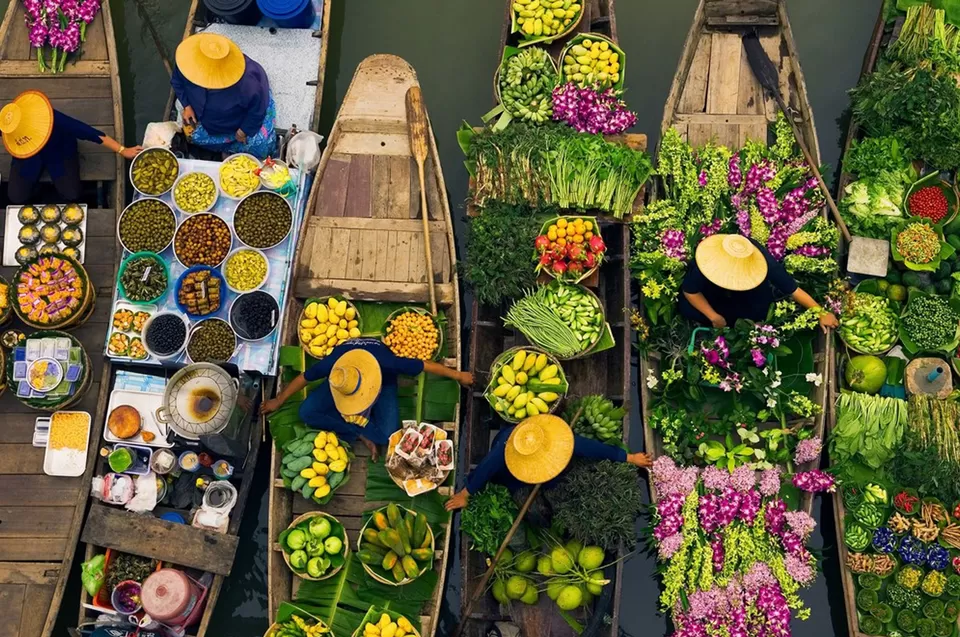
Accommodation and Lodging near Damnoen Saduak Floating Market
The Damnoen Saduak Floating Market is a half-day or a full-day trip from Bangkok, and it can be easily visited as a day trip. However, if you want to extend your stay and explore more of the area, you can also find some accommodation and lodging options near the floating market, which can enhance your comfort and quality of your stay. Here are some of the accommodation and lodging options near the floating market, and their pros and cons:
- Staying at a hotel: One of the most common and convenient options for staying near the floating market is to book a hotel that is close to the market. There are several hotels that are within walking distance or a short drive from the market, and they offer various facilities and services, such as air-conditioning, Wi-Fi, swimming pool, and restaurant. Some of the hotels that are near the floating market are the Damnoen Care Resort, the Maikaew Damnoen Resort, and the Nattha Waree Hot Spring Resort and Spa. The advantage of staying at a hotel is that you will have the most comfort and convenience, as you will have a private and cozy room and access to various amenities. The disadvantage of staying at a hotel is that it is the most expensive and least authentic option, as you will have to pay a high rate and miss out on the local culture and lifestyle.
- Staying at a homestay: Another option for staying near the floating market is to book a homestay that is run by a local family or a community. There are several homestays that are located along the canal or the nearby villages, and they offer a simple and basic accommodation, such as a fan, a mattress, and a shared bathroom. Some of the homestays that are near the floating market are the Baan Thai Damnoen Canal House, the Baan Suan Nuanta, and the Baan Khun Ta. The benefit of staying at a homestay is that you will have the most authentic and immersive experience, as you will get to interact and learn from the local people and their culture and lifestyle. The drawback of staying at a homestay is that you will have the least comfort and convenience, as you will have to adjust to the simple and basic facilities and services. - Staying at a guesthouse: Another option for staying near the floating market is to book a guesthouse that is owned and operated by a local business or a person. There are several guesthouses that are situated near the market or the canal, and they offer a moderate and comfortable accommodation, such as a fan or an air-conditioner, a bed, and a private or a shared bathroom. Some of the guesthouses that are near the floating market are the Damnoen Saduak Resort, the Baan Rim Klong Resort, and the Baan Thai House. The advantage of staying at a guesthouse is that you will have a balance between comfort and authenticity, as you will have a decent and cozy room and access to some amenities, as well as a chance to interact and learn from the local people and their culture and lifestyle. The disadvantage of staying at a guesthouse is that it is a medium-priced and medium-quality option, as you will have to pay a fair rate and compromise on some facilities and services.
Conclusion
The Damnoen Saduak Floating Market is one of the most famous and popular attractions in Thailand, and it is a must-visit place for anyone who wants to experience the authentic Thai culture and lifestyle. The floating market is not only a place to buy and sell goods, but also a place to enjoy and learn about the history, features, activities, transportation, and accommodation of the area. By visiting the floating market, you will be able to witness and appreciate the exotic and charming atmosphere of the country's preserved culture, and you will have a memorable and unforgettable experience.
So, what are you waiting for? Book your tour to the Damnoen Saduak Floating Market today, and get ready to have the time of your life!













